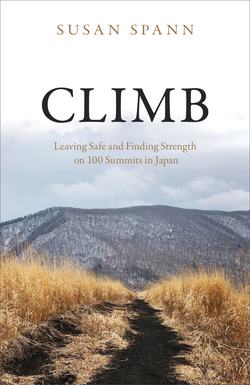Читать книгу Climb - Susan Spann - Страница 4
На сайте Литреса книга снята с продажи.
Introduction
ОглавлениеHyakumeizan
I have always been afraid of the things I love.
Afraid I wasn’t good enough. Afraid I would fail. Afraid my failure would disappoint the people I love and that they wouldn’t love me anymore.
From childhood, I always chose the safest path to any destination. I followed every rule to the letter. I feared the consequences of rebellion. As an adult, I clung to safety, terrified that pursuing my dreams would only leave me broke and brokenhearted.
I loved the mountains but lived in the city. I loved to write, but my fear that it wouldn’t provide a stable income drove me onto the path my father chose (and for similar reasons): I became a lawyer and practiced law.
I had wanted to climb Mount Fuji since I first saw a photograph of the mountain when I was a pudgy, nearsighted, clumsy child. But I knew, despite the siren song of Fuji’s snowcapped cone, that such an iconic mountain lay impossibly far beyond my abilities.
Instead, I devoured every issue of National Geographic magazine, fingers caressing the vivid photographs of glowing glaciers and snowy peaks. In college, I blew my entertainment budget on mountaineering books and travelogues. My friends fawned over movie stars, but my heroes were Reinhold Messner, Tenzing Norgay, and Junko Tabei (the first woman to stand on the summit of Mount Everest).
Yet even as I imagined the exhilaration of standing atop Denali or K2, I always knew I would never dare to climb them . . . until a nearly-disastrous trip to Japan in 2015 inspired a burning desire to see what would happen if, just for once, I listened to my hopes and not my fears.
* * *
After that trip in 2015, I remembered a mountaineering book called Nihon Hyakumeizan (One Hundred Famous Mountains of Japan), written by Japanese mountaineer Kyūya Fukada. The book became an instant classic in Japan, and since its original release in 1964, it has inspired generations of hikers to climb the 100 mountains on Fukada’s list. The mountains are not difficult by mountaineering standards—many can be climbed in a single day—but for serious Japanese hikers, climbing the hyakumeizan is a major life achievement.
I originally read Fukada’s book in college, but bought a new copy in 2015. As I read about the beautiful, wild mountains he described, my lifelong love of reading about adventure ripened into a compelling need to climb these mountains for myself.
My emotions vacillated between excitement and abject terror.
What was I thinking? I had a job. I had responsibilities. I was wildly out of shape.
And yet, something inside me believed that I could do it. Not just climb, but face my fears. Rise to the physical challenges and finally answer the siren song of the mountains I loved so dearly.
My father let his need for safety and security cage him in. He lived, and died, without ever breaking past his fears.
I did not want to spend my life in my father’s chains.
In June of 2017, I made the decision: I was going to climb the hyakumeizan—but not the way Japanese hikers do, as a long-term rite of passage.
I would climb them all in a single year.
The physical and logistical challenges were daunting. Few people—and no Western woman over 45—had ever climbed the hyakumeizan in a year, and I was a middle-aged, overweight woman who courted disaster even hiking down a single mountain. To make it happen, I would need to suspend my law practice (which paid my family’s bills), obtain notoriously tricky visas for myself and my husband Michael, move to Japan, and execute a year-long expedition in a country whose language I barely spoke. That, in addition to climbing 100 mountains, more than 30 of which are active volcanoes and several of which kill hikers every year.
“Terrifying” didn’t begin to describe the emotions this inspired.
And yet, it was also a chance to shatter the shackles of my old, “safe” life, to overcome my fears of risk and failure, and to experience the incredible sights that had made my heart sing since that awkward child first fell in love with Mount Fuji in the pages of National Geographic magazine.
Terrified or not, I was going to try.
